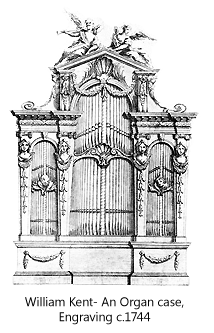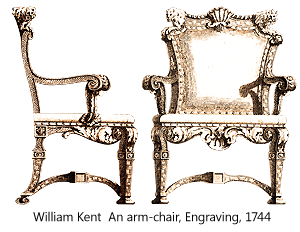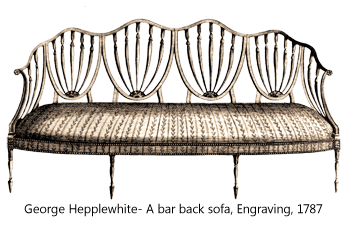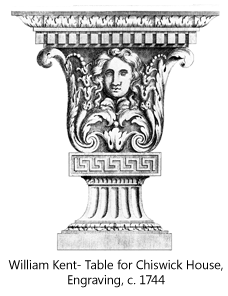- Prelude
- Editorial
- A Conversation with Jagdish Swaminathan
- Seeing is Very Important………
- Tormented Delineations and Violent Deformations
- Bikash Bhattacharjee: Subverting the Seen
- Bridging Western and Indian Modern Art: Francis Newton Souza
- Contesting National and the State: K K Hebbar's Modernist Project
- The Allegory of Return into the Crucial Courtyard
- Knowing Raza
- The Old Story Teller
- Beautiful and Bizarre: Art of Arpita Singh
- Feeling the Presence in Absence! Remembering Prabhakar Barwe
- Waterman's Ideal Fountain Pen
- Peepli Live: the Comic Satire Stripping off the Reality of Contemporary India
- Age of Aristocracy: Georgian Furniture
- Faking It - Our Own Fake Scams
- Scandalous Art and the “Global” Factor
- The Composed and Dignified Styles in Chinese Culture
- Visual Ventures into New Horizons: An Overview of Indian Modern Art Scenario
- The Top, Middle and Bottom Ends
- Top 5 Indian Artists by Sales Volume
- What Happened and What's Forthcoming
- The Month that was
- NESEA : A Colourful Mosaic
- Mumbai Art Sighting
- Art Events Kolkata
- Musings from Chennai
- Art Bengaluru
- Khoj, Kolkata Boat Project
- What a Summit!
- Ganesh Haloi at Art Motif
- The Other Self by Anupam Sud at Art Heritage, New Delhi
- Baul Fakir Utsav at Jadavpur
- Printmaking Workshop
- World's Greatest Never Before Seen Toy and Train Collection
- Previews
- In the News
- Christies: Jewellery Auction at South Kesington, London
ART news & views
Age of Aristocracy: Georgian Furniture
Volume: 3 Issue No: 13 Month: 2 Year: 2011
by Amitabh Bachhawat
The transition from Reformation to the Enlightenment marked the ushering of Georgian Era in the early 18th century England. This was the age of Aristocracy and development of Modern democracy in England. When Queen Anne died leaving no heir to the throne, a cousin of the Queen, George of Hanover, was crowned as King of England. He was the King George I and throughout his long reign his son and grandson all named George were the successive Kings of England.  The Georgian era covers, essentially, the reign of the House of Hanover from 1714 to 1837 (including the Regency Period 1811-1820) which encompasses the rule of George I, II, III & IV and that of William IV. King George I had little interest in politics, the work of ruling the country was handed over to ministers or the prime ministers. Throughout the Georgian period the foundation of the English political system was solidified into something resembling the present political system of England. During this period the English society underwent a revolution in art and architecture. This was the age of grand country houses and acquired territory overseas through conquest and settlement, lands that would eventually makeup an Empire stretching to every corner of the globe.
The Georgian era covers, essentially, the reign of the House of Hanover from 1714 to 1837 (including the Regency Period 1811-1820) which encompasses the rule of George I, II, III & IV and that of William IV. King George I had little interest in politics, the work of ruling the country was handed over to ministers or the prime ministers. Throughout the Georgian period the foundation of the English political system was solidified into something resembling the present political system of England. During this period the English society underwent a revolution in art and architecture. This was the age of grand country houses and acquired territory overseas through conquest and settlement, lands that would eventually makeup an Empire stretching to every corner of the globe.
The rural areas in England experienced the Agricultural Revolution during this period which affected the movement of large numbers of people and directly influenced the increasing decline of many small communities. This period also saw the quick growth of many cities and it was then that the integrated transportation system had its initial beginnings. This was the time when Industrial Revolution was born. The Industrial revolution caused the increase in and further defining class divisions in England, this lead to development of the rival political parties, the Tories and the Whigs. It was the period marked by exceptional cultural growth. This period saw the rise of the British Museum in the year 1753. Significant also during this time were the cultural accomplishments of such figures as Dr. Samuel Johnson, William Hogarth, Samuel Richardson, George Friedrich Handel and many other cultural giants. The life in Georgian times was well documented in the literary works of writers such as Jane Austen and Henry Fielding. Georgian era was also a period of great architectural achievements as exemplified by the works of Robert Adam, John Nash and James Wyatt.
This was the time when Industrial Revolution was born. The Industrial revolution caused the increase in and further defining class divisions in England, this lead to development of the rival political parties, the Tories and the Whigs. It was the period marked by exceptional cultural growth. This period saw the rise of the British Museum in the year 1753. Significant also during this time were the cultural accomplishments of such figures as Dr. Samuel Johnson, William Hogarth, Samuel Richardson, George Friedrich Handel and many other cultural giants. The life in Georgian times was well documented in the literary works of writers such as Jane Austen and Henry Fielding. Georgian era was also a period of great architectural achievements as exemplified by the works of Robert Adam, John Nash and James Wyatt.
The reign of George saw great changes in fashion, in art, architecture and all forms of design. The influence of travel abroad and culture in other countries created diversity by experimentation on the design in the Georgian period. The design of the furniture evolved on the lines of development in the architecture in early Georgian period. Furniture in the mid Georgian period was sophisticated due to high skill in craftsmanship and design whereas in the late Georgian period furniture, there was classical revival. To study the furniture design in Georgian times the period is divided into three categories Early Georgian, Mid Georgian and Late Georgian.
Early Georgian Period

Early Georgian furniture evolved during the end of Queen Anne period. In the beginning there was an influence of Queen Anne style on the early Georgian furniture before it underwent modifications of its own. The important change occurred was introduction of Mahogany wood replacing walnut partially. Mahogany was well suited to cabinet makers as being very strong, long lasting and having close grained wood suitable for experimentation. Most important designer of the early Georgian period was William Kent who travelled to Rome to study Architecture. He followed the ideas of the Italian architect called Andrea Palladio, Italian architecture of 16th century called Palladianism. Architecture and furniture design have always had close relationship but in the designs of the Palladian and their imitators in early 18th century England this relationship became a deep intertwining, a pervasive and dogmatic ideology, the "Rules of Taste". The ornamentation  on the furniture was Baroque and Kent designed furniture on the lines of architecture with heavy Baroque elements. The "Kentian" furniture that resulted was ornate, of mammoth size, heavy, only barely movable with lavish carving and golden ornamentation. Palladian style furniture made much use of elaborate pediments, masks, and sphinxes. Furniture pieces that were popular in the earlier Georgian times were, side tables, especially pier tables, usually with marble tops, chairs peaked with shells and legs graced with fish-scaled scrolls, as well as bookcases and gilt mirrors. These designs were largely inspired by architectural elements such as molded doors and pediments, they were of sculptural proportions. Palladian style furniture stood apart from most other early Georgian furniture in that it was designed and made for a small, very wealthy class of people and appeared only in their great country homes, mansions, and palaces. It had, as a result, little lasting impact, never making the leap to common use and approval.
on the furniture was Baroque and Kent designed furniture on the lines of architecture with heavy Baroque elements. The "Kentian" furniture that resulted was ornate, of mammoth size, heavy, only barely movable with lavish carving and golden ornamentation. Palladian style furniture made much use of elaborate pediments, masks, and sphinxes. Furniture pieces that were popular in the earlier Georgian times were, side tables, especially pier tables, usually with marble tops, chairs peaked with shells and legs graced with fish-scaled scrolls, as well as bookcases and gilt mirrors. These designs were largely inspired by architectural elements such as molded doors and pediments, they were of sculptural proportions. Palladian style furniture stood apart from most other early Georgian furniture in that it was designed and made for a small, very wealthy class of people and appeared only in their great country homes, mansions, and palaces. It had, as a result, little lasting impact, never making the leap to common use and approval.

Mid Georgian Period
The Palladian Taste of the early Georgian period was suited to the wealthy class of people in the 18th century England. The wider middle class had little money to spend and the Palladian style furniture was expensive for them, a lighter and less architectural style was becoming popular in mid Georgian period. A furniture style developed on the lines of Louis XV era in France called Rococo, became very popular in the mid Georgian period. Baroque elements of the earlier period did not go altogether; there was Palladian taste in some of the furniture pieces like Bookcases which had architectural motifs in the mid Georgian period. The term “Rococo” comes from the French “rocaille” means rock-like and shell motifs. The term “after the French manner” in the context of English 18th century design meant the Rococo style , combination of Baroque,  grotesque and fantasy styles of motifs and ornamentation which came to dominate French design from around 1700. This Rococo style was popularized by the designs of Mathias Lock who pioneered the Rococo in England. He created some fine gilt furniture based on his design books “Six Scones”, “Six Tables” and the “Principal of Ornament”. Thomas Langley, after studying French prints, produced a side table with front legs carved in the shape of female terms intertwined. The carver James Pascal made a number of gilt wood side tables, sconces, and chairs in the rococo style. John Channon made a set of bookcases with ormolu mounts and inlay topped with broken pediments. Although the Rococo had French origin but the English designers developed their own Rococo style and anglicized it. English designers mixed the Chinese motifs in their Rococo elements and thus the term “Chinoiserie” borne. Most important name in this period is of Thomas Chippendale, he was a cabinet maker who published his “Gentleman's and Cabinet Makers Director” cemented the Rococo style of interior display in England.
grotesque and fantasy styles of motifs and ornamentation which came to dominate French design from around 1700. This Rococo style was popularized by the designs of Mathias Lock who pioneered the Rococo in England. He created some fine gilt furniture based on his design books “Six Scones”, “Six Tables” and the “Principal of Ornament”. Thomas Langley, after studying French prints, produced a side table with front legs carved in the shape of female terms intertwined. The carver James Pascal made a number of gilt wood side tables, sconces, and chairs in the rococo style. John Channon made a set of bookcases with ormolu mounts and inlay topped with broken pediments. Although the Rococo had French origin but the English designers developed their own Rococo style and anglicized it. English designers mixed the Chinese motifs in their Rococo elements and thus the term “Chinoiserie” borne. Most important name in this period is of Thomas Chippendale, he was a cabinet maker who published his “Gentleman's and Cabinet Makers Director” cemented the Rococo style of interior display in England.  Another firm William Ince and John Mayhew also published their own” Universal System of Household Furniture” with somewhat restrained rococo furniture.
Another firm William Ince and John Mayhew also published their own” Universal System of Household Furniture” with somewhat restrained rococo furniture.
Late Georgian Period
In the late Georgian period there started a reaction to both the Palladian and rococo taste during the time the George III. Again the parallel movement in French furniture style during the same time known as neoclassical style during the reign of Louis XVI started to appear in English furniture. The English Neoclassical style was popularized by the designs of designers like, William Chambers and James Stuart, more famous Robert Adam, George Hepplewhite and Thomas Sheraton. The study of the classical elements of Greece and Rome, more particularly the discovery of the ancient civilization of Pompeii and Herculaneum, an interest in classical architecture and ornament developed among the designers and thus the neoclassical style developed. In the neoclassical designs great emphasis was given to forms and straight lines, logically ordered, replaced the curves and flounces of Rococo. Ornamentation and decoration are sometimes detailed and careful, almost always abundant. There is much use of painting, inlay, veneer, light carving and relief, and marquetry. Mahogany is the primary wood of choice but some satinwood is also used. The cabriole leg was replaced by straight leg in favour of straight lines and narrow tapering Saber legs adorned with twisted fluting. In 1762, James Stuart published "The Antiquities of Athens" after having studied archaeological sites in Greece and Italy.  He then advanced to design furniture with decorative motifs and carvings based on surviving ancient monuments. Robert Adam was the prominent figure in late Georgian times. He travelled to Rome to study classical ornament and made use of them in designing interiors of the room in neoclassical style. Adam had many followers notably among them was George Heppelwhite who imitated Adam and produced many neoclassical designs in furniture. In the final phases of neoclassicism, the designs of Thomas Sheraton had a huge practical impact and produced very elegant, sophisticated furniture in the neoclassical style in great numbers.
He then advanced to design furniture with decorative motifs and carvings based on surviving ancient monuments. Robert Adam was the prominent figure in late Georgian times. He travelled to Rome to study classical ornament and made use of them in designing interiors of the room in neoclassical style. Adam had many followers notably among them was George Heppelwhite who imitated Adam and produced many neoclassical designs in furniture. In the final phases of neoclassicism, the designs of Thomas Sheraton had a huge practical impact and produced very elegant, sophisticated furniture in the neoclassical style in great numbers.
To sum up the furniture of the Georgian period, it may be pointed out that the different styles of ornament which had been introduced in the late Queen Anne and early Georgian period, formed the basis on which the later designers of the period based their own English ideas, which gave the furniture world characteristic styles expressing the individuality of the designer and master cabinet-maker. These ideas formed the basis of the furniture design through the various other periods followed and are also relevant to the Modern furniture concept.